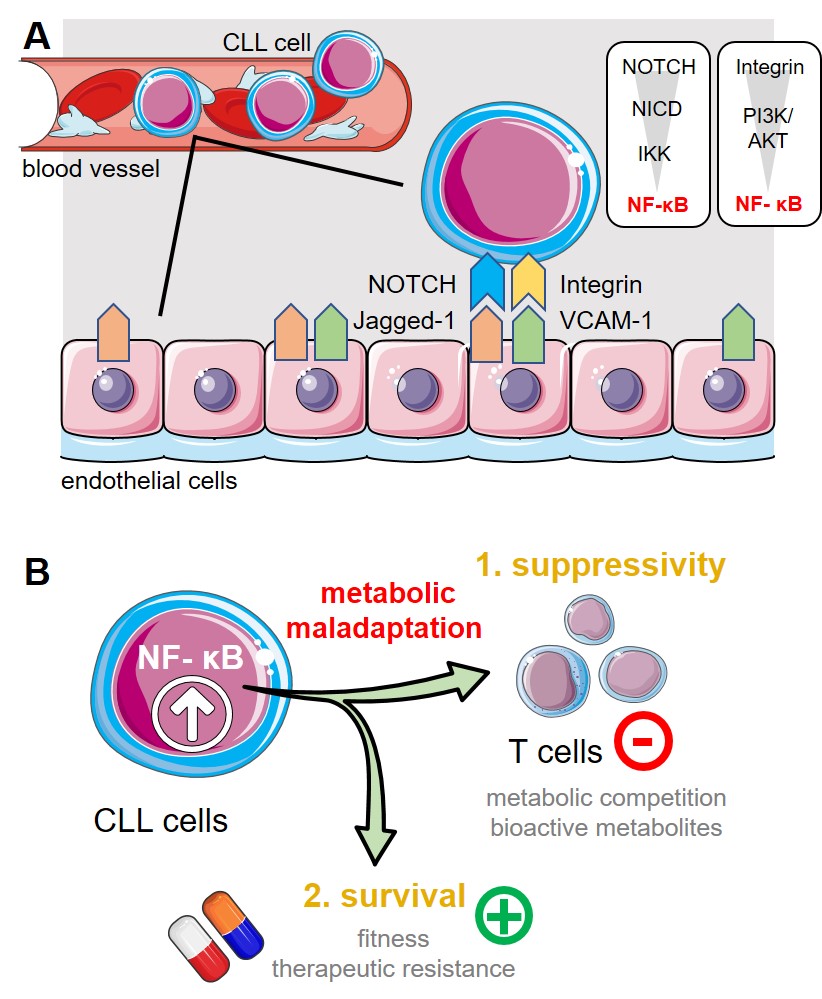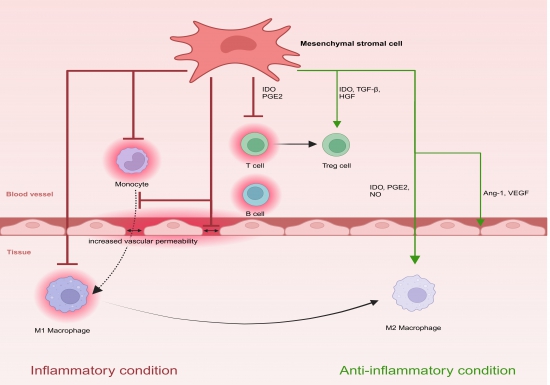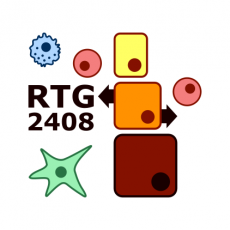Prof. Dr. Dimitrios Mougiakakos

Prof. Dr. Dimitrios Mougiakakos
Project Leader
Project 13
P13-2: Endothelial cell-triggered metabolic maladaptation of CLL cells controls therapeutic resistance and immune escape
|
Chronic lymphocytic leukemia (CLL) represents the most common leukemia amongst adults in the Western world. Mature B-cell-derived cells progressively accumulate in the patients’ peripheral blood, lymphatic tissues, and bone marrow. Despite improved therapeutic approaches, allogeneic hematopoietic stem cell transplantation remains the only curative treatment option. One of the CLL cell’s hallmarks is their metabolic perturbation that affects both production and utilization of energy (i.e. bioenergetics) as well as redox homeostasis. We have previously shown that circulating CLL cells display increased oxidative phosphorylation (OXPHOS), mitochondrial biogenesis, and mitochondrial production of reactive oxygen species (ROS). Additionally, we described further CLL-related immune escape mechanisms that include the induction of myeloid derived suppressor cells (MDSCs) or an enhanced expression of the immune checkpoint molecule PD‑L1. Bidirectional interaction between CLL cells and the surrounding non-transformed stromal compartment (especially in the bone marrow) and extracellular matrix components extend CLL survival and protect from chemotherapeutics. We found this is at least partly mediated via bioenergetic reprogramming and formation of immune escape variants, both of which are of particular importance for drug sensitivity and immunotherapeutic concepts including among others monoclonal antibodies or genetically engineered CAR T-cells. Endothelial cells (ECs) also represent a component of the tumor stroma and previous data suggest an involvement in CLL pathobiology. Similarly to the bone marrow stroma, ECs express several surface markers that may allow cell-to-cell contact between them and CLL cells (e.g. NOTCH and integrin ligands) all culminating at NF-κB. Hence, we hypothesize that a chronic bidirectional crosstalk between ECs and CLL cells leads to metabolic maladaptation in CLL cells. First, we will analyze the metabolic phenotype and the underlying signaling pathways of human/murine CLL cells in response to their interaction with ECs. We will employ different methods for metabolic profiling using an in vitro co-culture model (cooperation with Project 2) including single-cell RNA sequencing (cooperation with Project 12), targeted metabolomics, and flow cytometry-based analyses of metabolic markers/parameters as well as intracellular signaling components (focus on NF-κB signaling in cooperation with Project 1). As the next step, we will delineate the impact of EC-mediated metabolic alterations on the CLL cells’ drug resistance and their ability to hamper T cell immunity by challenging the CLL cells with conventional agents and targeted approaches and analyzing T-cell activation, function, and exhaustion. To evaluate the influence of EC-mediated metabolic maladaptation of CLL cells on those processes, we will inhibit the respective metabolic pathways as well as genetically ablate involved metabolic proteins/enzymes via CRISPR/Cas9 approaches. Last, we will interfere with the identified (metabolic) mechanisms in vivo using a preclinical model and evaluate the impact on the CLL cell metabolism, T cell compartment, and response to therapies. Proposed model of interaction between ECs and CLL cells. (A.) CLL cells display a recurrent and often yearlong contact to the epithelial barrier during circulation and/or transendothelial migration into e.g., the bone marrow or spleen. ECs express amongst other cell surface proteins the NOTCH-ligand Jagged-1 and integrin ligand VCAM-1. Triggering NOTCH (by Jagged-1) or integrin a4b1 (by VCAM-1) leads both to activation of NF-kB in CLL cells. High NF-kB activity represents one of the CLL cells’ hallmarks. (B.) NF-kB signaling can control cellular bioenergetics. A sustained NF-kB pathway activation (as elicited by ECs) could promote metabolic maladaptation in CLL cells. Thereby, it could (1.) enhance the CLL cells’ ability to suppress immune responses by e.g., substrate depletion and/or production of bioactive metabolites and it could (2.) promote the malignant cells’ survivability especially in presence of chemotherapeutics. Abbreviations: NICD; Notch intracellular domain, IKK; IkB kinase, PI3K, phosphoinositide 3-kinase. |
Photos: by UMMD, Melitta Schubert/Sarah Kossmann
P13-3: Understanding the interaction between MSCs, the endothelial barrier and myeloid cells in the context of their immunoregulatory function during inflammatory processes.
|
|
Mesenchymal stromal cells (MSCs) are multipotent progenitor cells derived from tissues like bone marrow, adipose tissue, and umbilical cord blood. Known for their regenerative properties, MSCs possess potent immunomodulatory functions, closely interacting with key physiological barriers such as the endothelium and immune cells like monocytes and macrophages. In inflammatory states, the endothelial barrier often becomes compromised, leading to increased permeability, tissue edema, and systemic inflammatory spread. MSCs counter these effects by preserving endothelial integrity through the release of bioactive molecules that strengthen cell junctions and reduce vascular leakage, a critical factor in maintaining barrier function during inflammation.
|
Photos: by UMMD, Melitta Schubert/Sarah Kossmann
P14-2: Interleukin-7 dependent infiltration of acute lymphoblastic leukemia across the testicular endothelial barrier
|
PhD Student Co-supervisor
Co-supervisor |
Leukemia is a malignant disease of the hematopoietic system which is characterized by the uncontrolled proliferation of white blood cells. In children, acute lymphoblastic leukemia (ALL) is most common. Although optimized treatment regimens improved the prognosis for ALL in recent years, relapses still occur. The vast majority of extramedullary (i.e., non-bone marrow) relapses of pediatric ALL involve the central nervous system and testes. In the case of testicular relapse, testis removal or high-dose radiation therapy is often recommended. These treatments can lead to infertility and impaired physical development. Therefore, less invasive treatment options are urgently needed. For their development, we need to better understand the cellular interactions that contribute to the testicular infiltration of ALL cells. We hypothesize that the settlement and/or maintenance of ALL cells in the testis is promoted by local production of interleukin-7 (IL-7). This hypothesis is based, firstly, on the fact that the IL7/IL-7 receptor (IL-7R) signaling pathway plays a role in ALL pathogenesis, extramedullary infiltration in the central nervous system and contributes to a higher relapse risk. Secondly, we observed high levels of IL-7 production in the mouse testis. To date, the role of local IL-7 in testicular relapse has not been investigated, although IL-7 production in the human testis has been demonstrated in several studies. In this project, we aim to determine time and source of IL-7 production in the testis as well as its role in testicular infiltration of leukemia. Using conditional knockout mice, we will investigate how IL-7 production in the testis affects testicular homing, proliferation, metabolism and chemoresistance of ALL cells. With the help of this project we aim to develop novel, more specific and less invasive therapies for testicular ALL involvement and prevention of testicular relapse. This project was led by Prof. Dr. Denis Schewe until 04/2024.
Testicular homing and/or maintenance of ALL cells may be sustained due to IL-7 production by testis cells: sperm cells, Sertoli cells, Leydig cells, fibroblasts etc. The aim of the project is to determine the source and role of the local IL-7 production in testis for testicular leukemia. |
Photos: by UMMD, Melitta Schubert/Sarah Kossmann
CS6: Impact of oxidative stress in T-cell subsets on chemotherapy response and survival in patients with acute myeloid leukemia
|
|
The importance of T-cell immunity and its impact on the success of chemotherapy and survival in the context of hematologic diseases has recently been demonstrated in various studies for acute lymphoblastic leukemia and after allogeneic stem cell transplantation (allo-HSCT) for acute myeloid leukemia (AML). T-cells are regarded as a physiological barrier against malignant transformation, a chronic phase of immune attenuation often precedes the acute process. In this project, the influence of different T-cell subsets and in particular the effect of oxidative stress on T-cell immunity in relation to chemotherapy response and survival in patients with AML shall be investigated. For this purpose, patient samples from our biobank are used to unmask differences in T-cell immunity at initial diagnosis using a comprehensive FACS panel and to evaluate their influence on clinical (e.g. blast cells, inflammation, cytogenetics) and survival parameters (overall survival, relapse-free survival). 8-OHdG will be used to examine the influence of oxidative stress on T-cell immunity. The aim is to identify subgroups of AML patients who are associated with a particularly good or particularly poor overall survival, relapse-free survival or therapy response. A better understanding of this relationship could lead to promising patient-specific treatment approaches, as it is conceivable that host-T-cell immunity has a similar impact as the already examined graft-T-cell immunity after allo-HSCT.
Graphical abstract on the impact of oxidative stress in T-cell subsets on disease characteristics, therapy response and survival parameters in patients with acute myeloid leukemia (Created with Biorender.com). |
Photos: by UMMD, Melitta Schubert/Sarah Kossmann

















